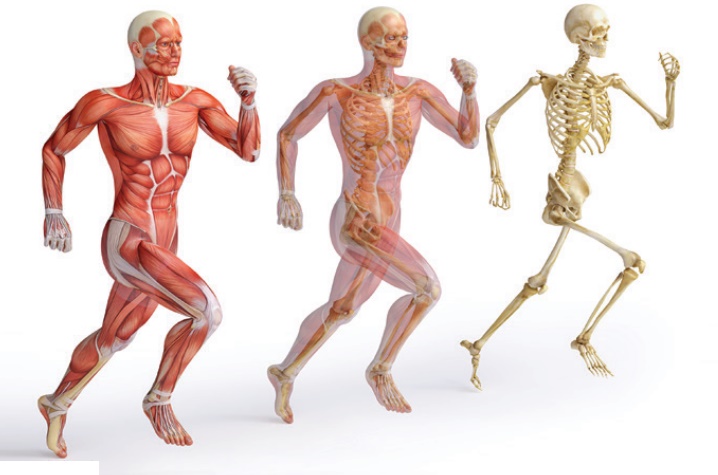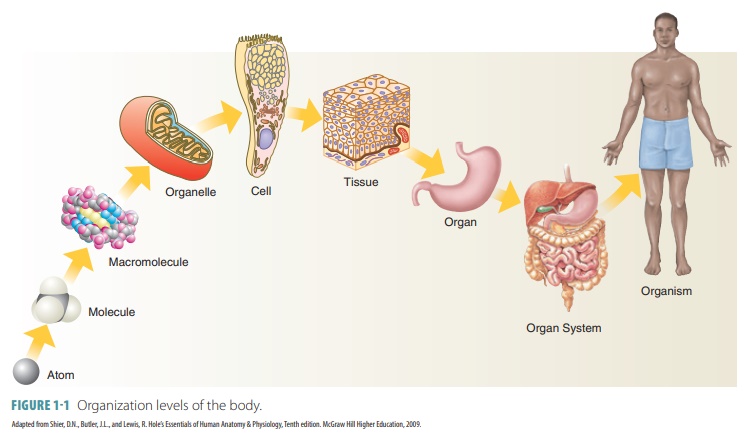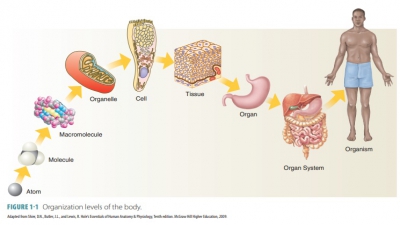Introduction to Human Anatomy and Physiology
| Home | | Anatomy and Physiology | | Anatomy and Physiology Health Education (APHE) |Chapter: Anatomy and Physiology for Health Professionals: Levels of Organization : Introduction to Human Anatomy and Physiology
1. Describe the difference between gross anatomy and developmental anatomy. 2. Compare cytology and histology. 3. Explain the classifications of physiology.
Introduction
to Human Anatomy and Physiology

After
studying this chapter, readers should be able to
1. Define
anatomy and physiology.
2. Name
the components that make up the organization levels of the body.
3. Describe
the major essentials of life.
4. Define
homeostasis and describe its importance to survival.
5. Describe
the major body cavities.
6. List
the systems of the body and give the organs in each system.
7. Describe
directions and planes of the body.
8. Discuss
the membranes near the heart, lungs, and abdominal cavity.
9. List
the nine abdominal regions.
10. Compare
positive and negative feedback mechanisms.
Overview
The study of anatomy and
physiology is vital for all health professionals and it involves many different
areas of science to understand how the human body works and how it is
structured. The study of anat-omy and physiology provides answers to many questions
about the functions of the body in both health and disease. As a result of this
understanding, it is possible to see what happens to the body when it is
injured, stressed, or contracts a disease or infection. It is important for all
allied health students to be familiar with the terminology used in anatomy and
physiology. In this chapter, the focus is on a complete introduction to anatomy
and physiology.
The structures and functions of
the human body are closely related. Anatomy is the study of the struc-ture of body parts and how they are
organized. This term is derived from the Greek words meaning tocut apart.Physiologyis the study of how body partswork. Every body part functions to assist
the human body in different ways. It is not easy to separate the topics of
anatomy and physiology because the struc-tures of body parts are so closely
associated with their functions. Each part has its own unique substruc-tures
that allow it to perform its needed functions.
Pathophysiology is the study of changes associatedwith, or resulting from,
disease or injury. It is also con-cerned with biological and physical
manifestations of disease as they relate to underlying abnormalities and
physiological disturbances. Pathophysiology explains the processes within the
body that result in disease signs and symptoms but does not focus directly on
the treatment of disease.The human body has been studied
for hundreds of years. Even though its inner workings are well under-stood, new
discoveries are being made even today.
In 2003, the human genome
(instructions that allow the body to operate) was deciphered for the first
time. There are more than 20,000 genes in the human body, and this substantial
discovery took many years to complete. Researchers frequently discover new
infor-mation about physiology, particularly at the molecular level, but basic
human anatomy changes very slowly.
Classifications of Anatomy
The many subdivisions of anatomy
include gross (macroscopic) anatomy, microscopic anatomy, and developmental
anatomy. These can be further broken down as follows:
■■ Gross (macroscopic) anatomy: The study oflarge body structures that can be seen without a
microscope. These include the brain, heart, kidneys,
lungs, and skin. Studies conducted to understand gross anatomy made use of dissected
animals and their organs.
Regional
anatomy: All structures in a
cer-tain body region are examined at the same time. For example, for an arm,
the structures being examined would include skin, muscles, bones, nerves, blood
vessels, and others.
Systemic
anatomy: Each body system
isexamined. For example, the heart would be examined when studying the
cardiovascular system, but so would all the blood vessels in the body.
Surface
anatomy: This is the
examinationof internal structures related to overlying skin surfaces. Surface
anatomy is used, for example, to locate the correct blood vessels used for
phlebotomy.
■■ Microscopic anatomy: The study of small bodystructures that require a microscope to be
seen.
This requires making thin slices
of tissues, which are then stained and affixed (mounted) to glass slides for
microscopic examination.
Cytology: A subdivision of microscopicanatomy that focuses on body
cells.
Histology: A subdivision of microscopicanatomy that focuses on body
tissues.
■■ Developmental anatomy:The study of structural changes in anatomy throughout the life
span.
Embryology: A subdivision of developmen-tal anatomy that focuses on
developmental changes occurring before birth.
For medical diagnosis, scientific
research, and other highly specialized needs, pathological or radio-graphic
anatomy may be used. Pathological anatomyfocuses on disease and the
structural changes that are a result of the disease, whereas radiographic
anatomy focuses on internal structures via the use of X-rays or specialized
scanning equipment such as magnetic resonance imaging (MRI) or computed
tomography (CT). Molecular anatomy
focuses on the structure of chemical substances (biological molecules).
Although formally considered a branch of biology,
molecular anatomy is still part of the overall study of anatomy as it focuses
on subcellular particles of the body.
Anatomical studies require a
combination of many different skills. These include anatomic terminology,
observation, auscultation (using a
stethoscope to listen to organ sounds), manipulation, and palpation (feeling body organs for normal or abnormal conditions by
using the hands).
Classifications of Physiology
Physiology is concerned with how
the body func-tions, often focusing on cellular or molecular activi-ties. There
are also many subdivisions of physiology, which are primarily focused on
certain organ sys-tems. Examples of physiology classifications are as follows:
■■ Respiratory physiology: Focuses
on the functions of the respiratory system
■■ Cardiovascular physiology:
Focuses on the heart and blood vessels
■■ Neurophysiology: Focuses on
the nervous system
■■ Renal physiology: Focuses on
the functions of the kidneys, including urine production
The physiology of the human body
is based on chemical reactions that affect the actions of cells at the
molecular level. Physiology is also linked to the study of physics, which takes
into account body functions such as blood pressure, electrical currents, and
mus-cular movement.

1. Describe the
difference between gross anatomy and developmental anatomy.
2. Compare cytology and
histology.
3. Explain the classifications of physiology.

